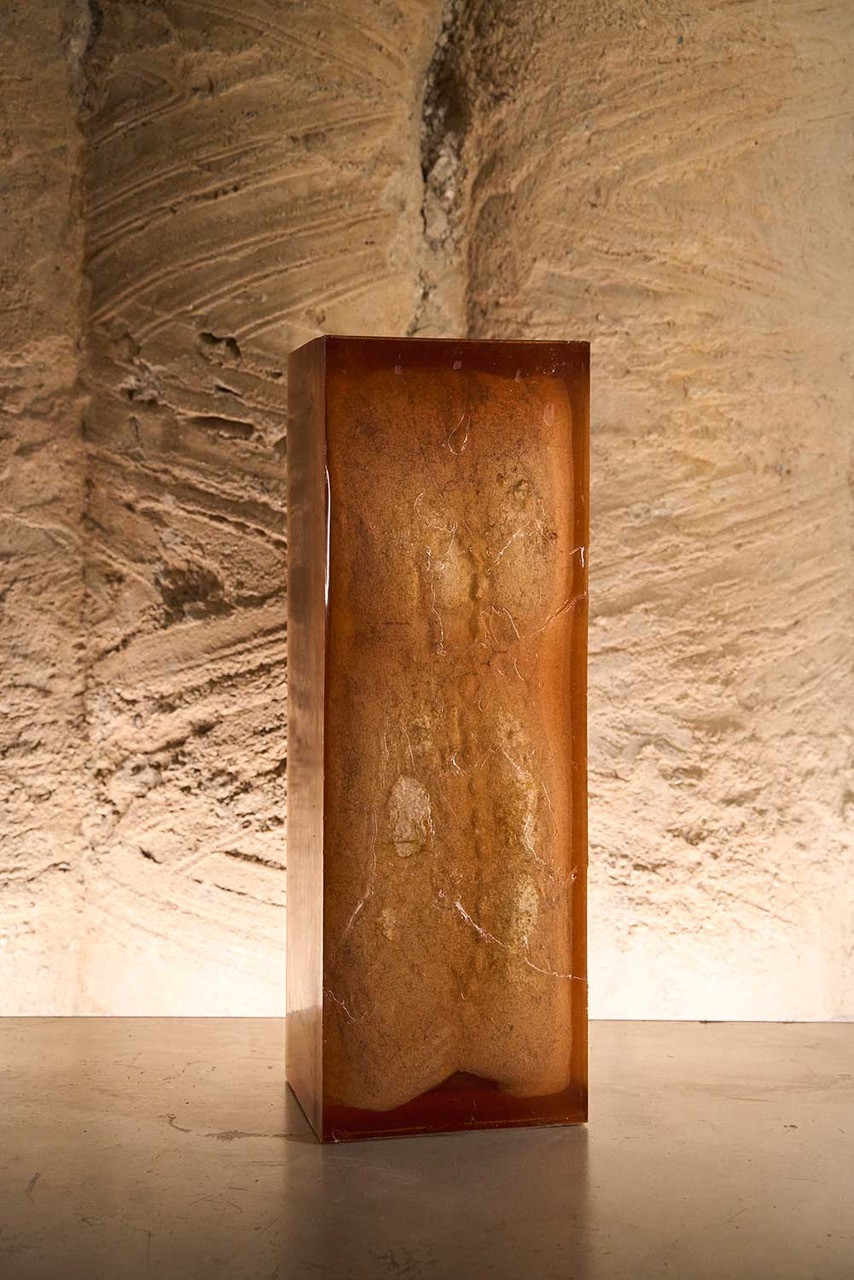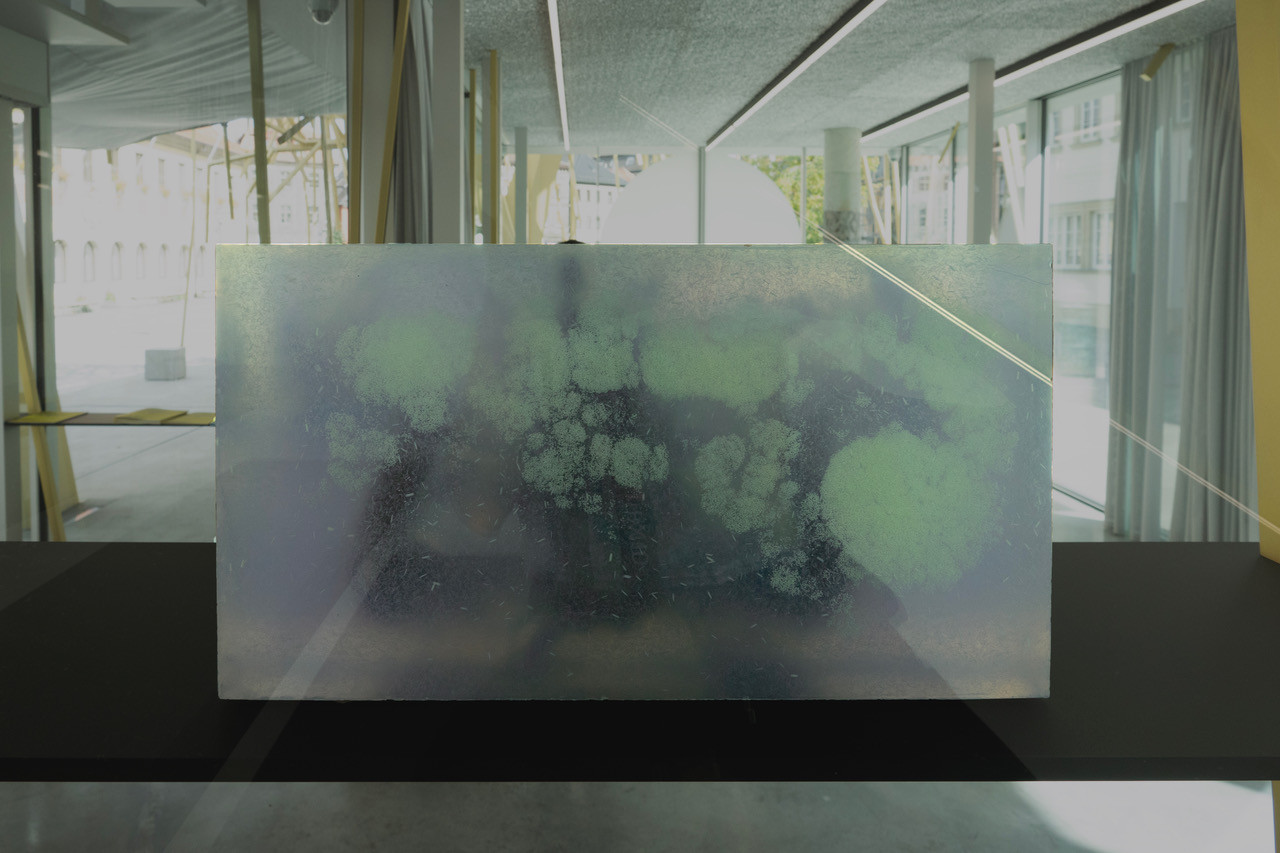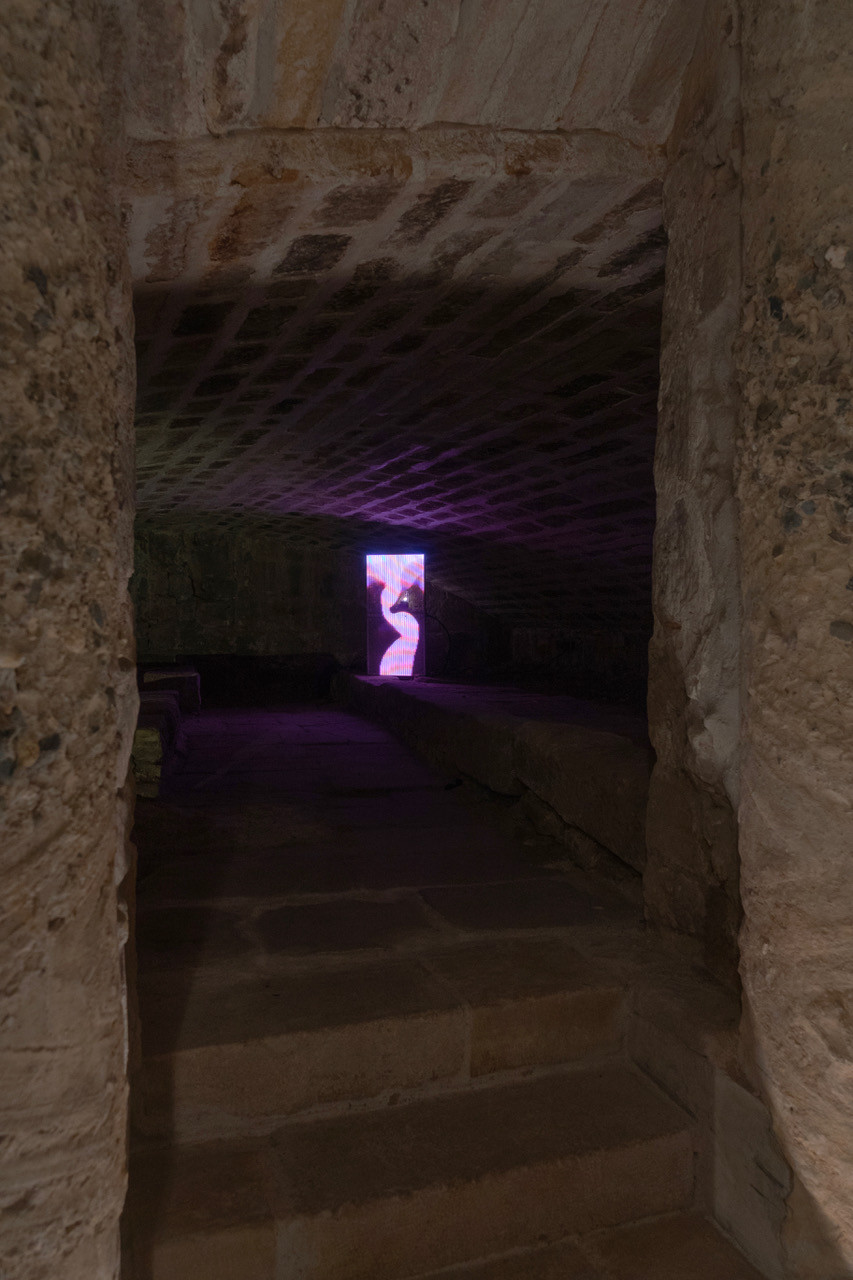Susi Gelb Foundations are never mute
Susi Gelb’s ecosystems propose another kind of time: collaborative in their entanglement, generative in their instabilities. At the Archiv der Zukunft, she invites us into manifold temporality: overlapping durations where geological patience and digital churn coexist. Attend closely and matter is never mute, never inert. Pigments entangle with data, images seep into bodies; soil transmits charge into air; architectures reverberate. Ground itself is motion – alchemical, generative – carrying futures that age beneath our feet.

Architectural foundations are never mute. They compress, intersect, breathe. Moisture seeps through seams, residues cling, and frequencies circulate through steel and stone. A basement does not simply support a building; it metabolises space. Structure rehearses decay and renewal: each wall a diagram of time, each void a register of unseen processes. In Lichtenfels, what becomes seen, is an assembly of raw material, magnetised into gatherings of people, fragments, particles, images, intentions, that condense and scatter in turn.
Susi Gelb’s practice emerges from these turbulences. She composes carefully, yet allows serendipity in. Processes unfold like collaborations with people, animals, materials, and algorithms. Her commission at the Archiv der Zukunft emerged from an invitation by the pavilion’s architect, Peter Haimerl. In the ground floor, a sculptural drillcore rises from the subterranean; no longer a neutral sample, it stands as a vertical structure of hybrid matter. The drillcore reads as strata held in suspension, a lively archive composed as palimpsest within each fragment. It invites the building into a choreography of materiality and architecture. Gelb’s chosen materials – stone, resin, pigment, concrete, synthetic residues, mineral dust – conserve time. Continuing her trajectory, she expands the proposition that remains and by-products persist as active forces; and foundations pulse.

What surfaces emerges as a synthesis, refusing the status of specimen. The work proposes a geology of contamination and conversion, where time folds and categories blur. Slop, a raw amalgam of organic matter and algorithmic surplus, seeps into the work until the two are indistinguishable. From here, matter is suspended between detritus and artefact; never fixed, always in motion. Within her work, soil and slop persist in process, oscillating between solidity and dissolution, sculptural presence and moving image. By leaving form partially unresolved, she allows transformation to remain perceptible in its recombination, decay and revaluation.
Her video works share this condition. They move away from self-contained representations becoming surfaces dense with remnants. Each projection bears traces of prior circulation, fragments of digital archives recycled and returned. The luminous cloudscapes in the video projection have a compost-like origin and are layered with excess, charged with meaning. Discard and resource exist as reversible states. Gelb cultivates this overflow as material, producing hybrids where archaic substances fuse with algorithmic gloss and natural matter entangles with synthetic pixels. Fragile yet resilient, these video works remind us that worlds have always collided and continue to collide.

Time courses through the work in overlapping registers. Outputs cycle back into inputs, echoes loop into origins, feedback overtakes sequence. Liveness does not hinge on an activating moment; here, live names a trembling field. Geological patience compresses millennia into sediment and stone, while digital systems accelerate without pause, producing a temporality closer to thickness than chronology. Gelb brings these scales into contact: deep time with the recursive churn of data, entropy with speed. What results traverses linear history, forming a fold where ruins and resources meld, where the spin-off persists as force shaping what is to come.
The Archiv der Zukunft pavilion constitutes another living vessel in Gelb’s ecosystem. Its glass and steel start to behave like membranes, filtering and transmitting, instead of enclosing. Reflections leak outward, images seep inward, and sound circulates through air and structure alike. Architecture becomes part of the work’s metabolism, reinforcing what unfolds; an environment in formation. The question of when the work comes to life is rendered obsolete within this expanded milieu. Sculpture refracts into projection, video thickens into surface, architecture turns membrane, resonating with the performance by Edith Buttingsrud Pedersen × Susi Gelb, with music by Enyang Ha.
Text: Lydia Antoniou